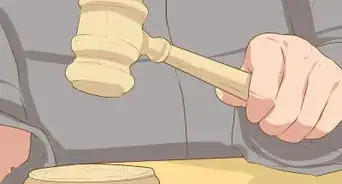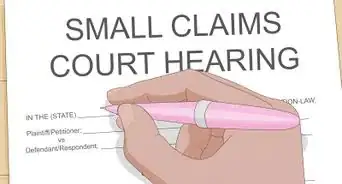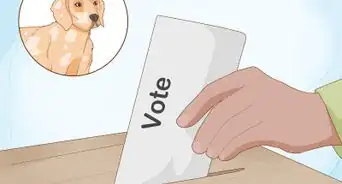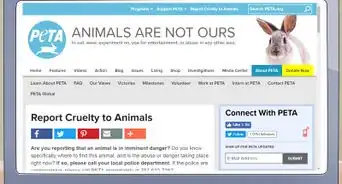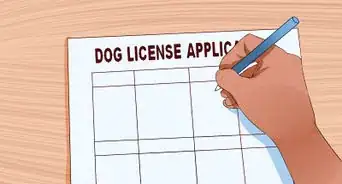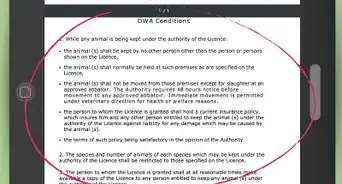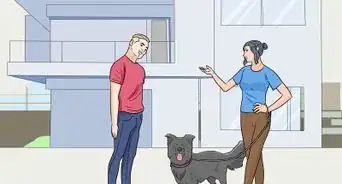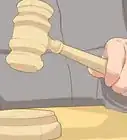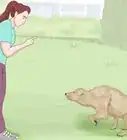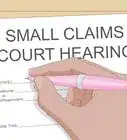X
This article was co-authored by Clinton M. Sandvick, JD, PhD. Clinton M. Sandvick worked as a civil litigator in California for over 7 years. He received his JD from the University of Wisconsin-Madison in 1998 and his PhD in American History from the University of Oregon in 2013.
This article has been viewed 30,765 times.
Animal waste not only dirties your neighborhood, but it can also be a health hazard. For these reasons, most cities require that dog walkers pick up any waste deposited by their dog. Many cities also require home owners to remove waste, whether their dog deposited it or not on their property. To make a waste complaint, find the appropriate office by looking in your phone book or searching the Internet.
Steps
Part 1
Part 1 of 3:
Making the Waste Complaint
-
1Find the appropriate office. Most cities have animal control offices to deal with complaints about animals. In some cities, animal shelters handle these complaints. To find the appropriate office, you can look for “animal control” in your phone book.
- You can also search the Internet. Type “animal waste complaint” and “your city.” The appropriate office should show in your search results.
- Once you find the appropriate office, write down the phone number that you call.
-
2Gather relevant information. Before calling, pull together the relevant information to give to animal control. For example, you should have the following:
- a description of the animal
- the animal’s address
- the time of the incident
- any other relevant details
Advertisement -
3Decide if you want to report anonymously. Some cities give you the ability to make an anonymous report. You might want to report anonymously if you are afraid of the animal owner or if you otherwise don’t want to get involved in any dispute.
- However, if you report anonymously, then animal control might not do anything. In order to properly punish the animal owner, animal control may have to request a hearing where evidence is presented against the dog owner. Animal control might not be able to bring this hearing if you are not willing to testify.
-
4Report online, instead. Some cities have online forms you can complete in order to make an animal waste complaint. For example, you can file an online complaint in New York City.[1]
-
5Meet with an animal control inspector. After you complain, animal control should reach out to the animal’s owner. An inspector may even stop to meet with the animal owner. You should offer to help animal control in any way that you can.
- For example, you should share with the inspector any documentation you have of the waste.
-
6Make a second complaint. After being contacted by animal control, the owner may still refuse to pick up after their animal. In this situation, you need to make a second complaint to animal control. In some cities, such as Fort Worth, you will have to fill out an affidavit. The affidavit should include:
- the name of the animal’s owner (or a description if you don’t know the name)
- the animal owner’s address
- a description of the animals
- the date and time of the incident
- any other details
- the names and contact information for other witnesses
- your signature before a notary public
Advertisement
Part 2
Part 2 of 3:
Documenting the Waste
-
1Take pictures of the animal depositing waste. Unless animal control observes the animal depositing waste, they are usually unable to issue a citation. However, animal control can issue citations if you have:
- a color photograph of the animal depositing waste
- the animal is visible in the photograph
- you document the date, location, and time of the incident
-
2Shoot video instead. It might be easier to make a video instead of taking photographs. Most smart phones have the capability to film short videos. Be sure that the animal and the owner are both visible, which will make it easier to identify both.
-
3Get witnesses. In some cities, animal control might need more than one person to make a complaint before they do anything, especially if you didn’t get a picture of the incident. You should check if you can get at least two witnesses.
- Speak to people around the neighborhood who might see the animal owner not pick up after the animal.
- Document the witness’s name and contact information, such as phone number and email address. Ask the witness if they would be willing to testify.
Advertisement
Part 3
Part 3 of 3:
Testifying in Court
-
1Receive notification to testify at a hearing. When the animal’s owner is uncooperative, animal control may issue a citation. However, the animal owner can challenge the citation at a hearing. If so, then you could be asked to testify.
- Make note of the date and location of the hearing. If you have never been to the courthouse before, then give yourself plenty of time on the day of the hearing to arrive on time.
-
2Dress appropriately. You want the judge hearing the case to take you seriously as a witness. Accordingly, you should try to look as professional as possible. Courts are conservative places, so you should dress conservatively.
- You probably don’t need to wear a suit to an animal waste hearing. However, you should dress “business casual” in dress pants and a dress shirt. Wear dress shoes, not sneakers, and remove any noisy or flashy jewelry.
- Make sure that you cut your hair and are clean and neat.
-
3Testify at the hearing. You might be nervous if you have never testified before. Nevertheless, you should come across as a credible witness if you follow these tips:[2]
- Listen closely to the question. If you don’t understand it, then ask that the question be rephrased.
- Always think before answering. Take a couple seconds to make sure you understand the question and know what you want to say.
- Be as brief as possible. You are there to give evidence and not to pass judgment on the animal owner.
- Avoid humor. A courtroom is a serious place, and you should take the hearing seriously.
Advertisement
References
About This Article
Advertisement












